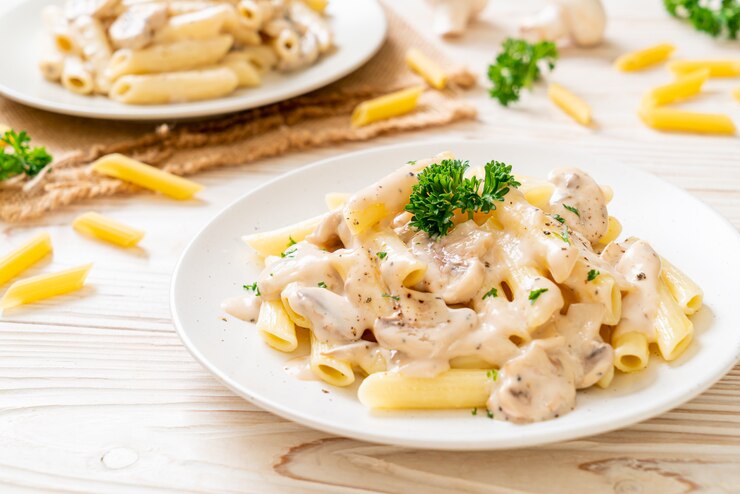The Roscioli Roman Cacio e Pepe is more than just a dish; it’s a celebration of simplicity and flavor that has captured the hearts and palates of food lovers around the world. Hailing from the renowned Roscioli family, who have been serving up exquisite Italian cuisine since the 1960s, this dish exemplifies the artistry and passion behind traditional Roman cooking. In this comprehensive guide, we delve into the nuances of creating this iconic dish in your own kitchen.
Table of Contents
ToggleThe Roscioli Culinary Legacy
The Roscioli family has established a culinary empire in Rome, marked by their commitment to quality and authenticity. With various food establishments, including a salumeria that doubles as a restaurant, the family has become a cornerstone of Rome’s gastronomic scene. Their dedication to preserving and perfecting traditional Italian recipes has made them a must-visit destination for both locals and visitors alike.
Cacio e Pepe: A Roman Classic
At the heart of their culinary repertoire is Cacio e Pepe, a dish that translates to “cheese and pepper.” This classic Roman pasta dish is deceptively simple, relying on just a few high-quality ingredients: pasta, cheese, and black pepper. What sets Roscioli’s version apart is their meticulous preparation and the use of a creamy sauce that elevates the dish to extraordinary heights.
Understanding the Ingredients
To recreate the Roscioli Roman Cacio e Pepe, it is essential to select the right ingredients:
1. Quality Pasta
- Type: The dish traditionally uses tonnarelli, a thick, square-shaped pasta that holds the sauce beautifully. However, spaghetti or long fusilli can be excellent substitutes.
- Dried vs. Fresh: Dried pasta is recommended for this recipe as it has a firmer texture that works well with the creamy sauce.
2. Exceptional Cheeses
- Pecorino Romano: This sharp, salty sheep’s milk cheese is essential for authenticity. It should be finely grated to achieve the desired creaminess.
- Parmigiano-Reggiano: This adds depth and complexity to the dish. Like Pecorino, it must be finely grated to blend seamlessly into the sauce.
3. Fresh Black Peppercorns
The use of whole black peppercorns, toasted and coarsely ground, is vital for an intense pepper flavor that complements the richness of the cheese.
Preparation Steps for Roscioli Roman Cacio e Pepe
Total Time
- Preparation Time: 5 minutes
- Cook Time: 25 minutes
- Total Time: 30 minutes
Yield
This recipe serves 4 to 6 people, making it perfect for a family gathering or an intimate dinner.
Ingredients Needed
- 2 tablespoons whole black peppercorns
- 7½ ounces (4¼ cups) finely grated Pecorino Romano, plus more for serving
- 3⅓ ounces (1⅓ cups) finely grated Parmigiano-Reggiano
- 1 pound dried tonnarelli, spaghetti (regular or thick), or long fusilli
Step-by-Step Instructions
1. Boil the Water
Bring a large pot of water to a rolling boil. It’s crucial not to add salt at this stage, as the cheese will provide enough saltiness to the dish.
2. Toast the Peppercorns
In a large nonstick skillet or pot set over high heat, toast the whole black peppercorns until fragrant, which usually takes about 1-2 minutes. Let them cool, then grind them coarsely, reserving 1 teaspoon for serving later.
3. Create the Pecorino Cream
In the same skillet, combine the finely grated Pecorino Romano and Parmigiano-Reggiano cheeses with the remaining ground pepper. Gradually add 1½ cups of warm water to the cheese mixture and stir until you achieve a thick, creamy consistency. This mixture is known as the pecorino cream and can be made ahead of time and stored in the refrigerator.
4. Cook the Pasta
Once the water is boiling, add the pasta and stir to prevent sticking. Keep the heat high until the water returns to a boil, then adjust the heat as necessary to maintain a vigorous boil. Set a timer for 8 minutes to ensure the pasta cooks thoroughly.
5. Combine Pasta and Sauce
As the pasta cooks, set the pecorino cream over very low heat to keep it warm. After 8 minutes, taste the pasta. It should be cooked through, as it won’t cook further once combined with the cheese sauce. Reserve ½ cup of pasta cooking water, then drain the pasta very well to prevent excess moisture, which can cause clumping.
6. Toss the Pasta in the Sauce
Add the drained pasta to the warmed pecorino cream. Using tongs or two forks, toss the pasta gently over low heat until the cheese melts and the sauce becomes sticky. If the sauce thickens too much, gradually add the reserved pasta water, 1 tablespoon at a time, tossing thoroughly to achieve the perfect creamy texture.
7. Serve and Enjoy
Divide the Cacio e Pepe among 4 bowls, twisting the pasta into a nest if desired. Dust with additional grated Pecorino Romano and sprinkle the reserved pepper on top. Serve immediately for the best flavor and texture.
The Roscioli Roman Cacio e Pepe is not just a meal; it’s an experience steeped in history and tradition. By following these detailed steps and utilizing high-quality ingredients, we can bring the authentic taste of Rome right into our homes. This dish exemplifies the beauty of Italian cuisine: simple, yet profoundly satisfying.
Whether you’re hosting a dinner party or enjoying a cozy meal at home, this Cacio e Pepe recipe will impress and delight, making it a timeless addition to your culinary repertoire. Enjoy this masterpiece of Roman cuisine and savor every bite!
How useful was this post?
Click on a star to rate it!
Average rating 0 / 5. Vote count: 0
No votes so far! Be the first to rate this post.


